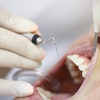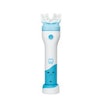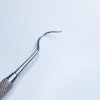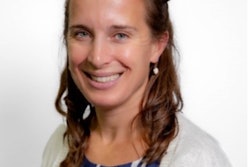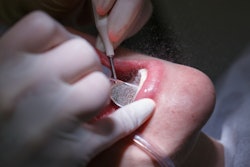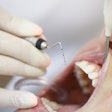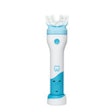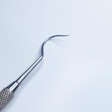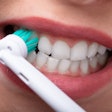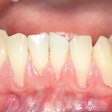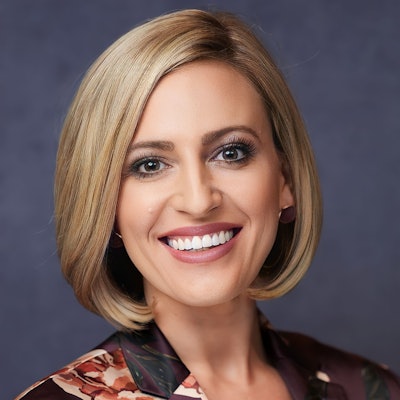
Welcome to the Future of Dental Hygiene, where we discuss what's hot, what's new, and what's coming down the line for dental hygienists. The future of dental hygiene isn't just about new tools or technologies -- it's about investing in your team's professional development. Practices that prioritize growth and empowerment for their hygiene teams see a direct impact on patient care, team morale, and even the bottom line.
So how can dental practices ensure their hygiene teams are equipped for the future? Here are five pragmatic ways to invest in your hygiene team's future without overextending the budget.
Training for excellence: The investment that pays off
High-quality training is the foundation of a successful hygienist or hygiene team. Comprehensive training ensures that every team member is equipped with the skills to deliver exceptional patient care. Training goes beyond teaching techniques -- it's about creating a culture of accountability. The most successful practices set clear expectations and empower their teams by establishing what success looks like for everyone.
While some practice owners worry that if they invest in training, team members may leave, the real concern should be if team members stay and practice owners don't invest in them. Training isn't just an expense, it's an investment in the future of the practice. Short-term productivity dips are often offset by long-term gains as the team becomes more skilled, efficient, and confident.
Empowerment: Let hygienists play to their strengths
Rigid protocols and micromanagement stifle creativity. The Strategic Coach teaches that the key to growth is to focus on unique abilities, allowing team members to operate within their areas of strength. When hygienists feel empowered to make decisions and creatively problem-solve within their roles, they're more likely to bring fresh ideas to the table. Empowerment leads to better patient care, increased job satisfaction, and greater team cohesion. Practices should foster an environment where creativity is encouraged and where team members can live in their strengths.
Professional development: What's hot and what's new
One of the hottest trends in dental hygiene right now is the shift toward continuous professional development. As Harvard Business Review notes, companies that invest in employee growth see higher levels of engagement and productivity. Attending one yearly event won't drive long-term success.
Growth requires ongoing learning opportunities that are aligned with the team's and the practice's goals. The future of dental hygiene is directly tied to continuous professional development, both inside and outside of the practice. Hygienists should be encouraged to attend workshops, webinars, and collaborative events that are tailored to their growth areas and in alignment with the practice's vision for the future.
Take it a step further by regularly evaluating what your team members want to accomplish and aligning development efforts with these goals. This forward-thinking approach allows for growth that's not only practical but also motivating.
Data-driven goals: Facts over feelings
Setting specific, measurable goals is essential for progress. As the Strategic Coach emphasizes, "What gets measured gets improved." Without clear goals, it's like kicking a field goal without seeing the posts -- you don't know if you're making progress or missing the mark.
Giving team members visibility into the numbers directly tied to their success doesn't mean revealing the practice's full financials. It's about helping them understand how their performance impacts the overall success of the practice.
Tools like Dental Intelligence make it easy to track key metrics such as patient compliance, case acceptance, and hygiene production. Remember, it's not about the numbers being the most important thing, they're just the constant. Facts over feelings. By focusing on measurable data, practices can help hygienists set and achieve specific goals that benefit both the team and the patients.
Leverage strengths for employee retention.
Professional development is also key for employee retention. Most hygienists don't leave their jobs for a small salary bump, they leave because they don't see a clear opportunity for growth. When you tap into what team members enjoy about their work and let them work in their areas of strength, you create a more fulfilling workplace.
When was the last time anyone asked their team members what their favorite and least favorite parts of their job are? Chances are, someone loves doing what another person dislikes. Leveraging these preferences not only reduces stress but increases productivity and overall satisfaction.
By allowing hygienists to play to their strengths, practices can build an environment where people are happier, less stressed, and less likely to leave. Growth and retention go hand in hand.
Conclusion: Build your team for the future
Investing in your dental hygiene team is one of the smartest moves a practice can make. By focusing on continuous professional development; empowering your team; setting clear, data-driven goals; and leveraging individual strengths, you're not only investing in today, you're building the future of your practice. You are building excellence.
The future of dental hygiene is about adopting a futuristic mindset -- thinking long term rather than settling for quick fixes. Just as hygienists approach patient care with a comprehensive treatment plan, practices should approach their teams' development in the same way: strategically and holistically. This means focusing not only on solving immediate issues but also on preparing for growth and success down the line.
One practical way to approach both patient care and team development is through the Tiny Habits methodology, as seen in Philips' The Path to Health program, developed with Dr. B.J. Fogg. For patients, small, achievable behavior changes lead to improved compliance and greater case acceptance. Team members can guide patients by helping them make manageable changes, ultimately improving their long-term health.
This same concept applies to professional growth within the practice. Just as patients benefit from incremental adjustments to their habits, teams can experience significant growth by starting small.
Professional development doesn't have to be overwhelming or require massive changes all at once. Instead, encourage your team to make small, consistent improvements whether it's enhancing their skills, taking ownership of measurable goals, or embracing new tools and technologies.
By applying the Tiny Habits framework to both patient care and professional development, you create a culture of continuous improvement. Small, sustainable steps taken by both your patients and your team lead to bigger, long-term gains. The future of dental hygiene isn't built on quick fixes but on intentional, ongoing progress.
So why wait? Start investing in your team's future today one small habit at a time.
Sheena Hinson, RDH, is a dynamic senior global professional marketing manager and head of global professional education and KOL relations at Philips Oral Healthcare. Hinson was recognized as the 2020 Dental Hygienist of the Year by TheNew.Dentist.
The comments and observations expressed herein do not necessarily reflect the opinions of DrBicuspid.com, nor should they be construed as an endorsement or admonishment of any particular idea, vendor, or organization.
